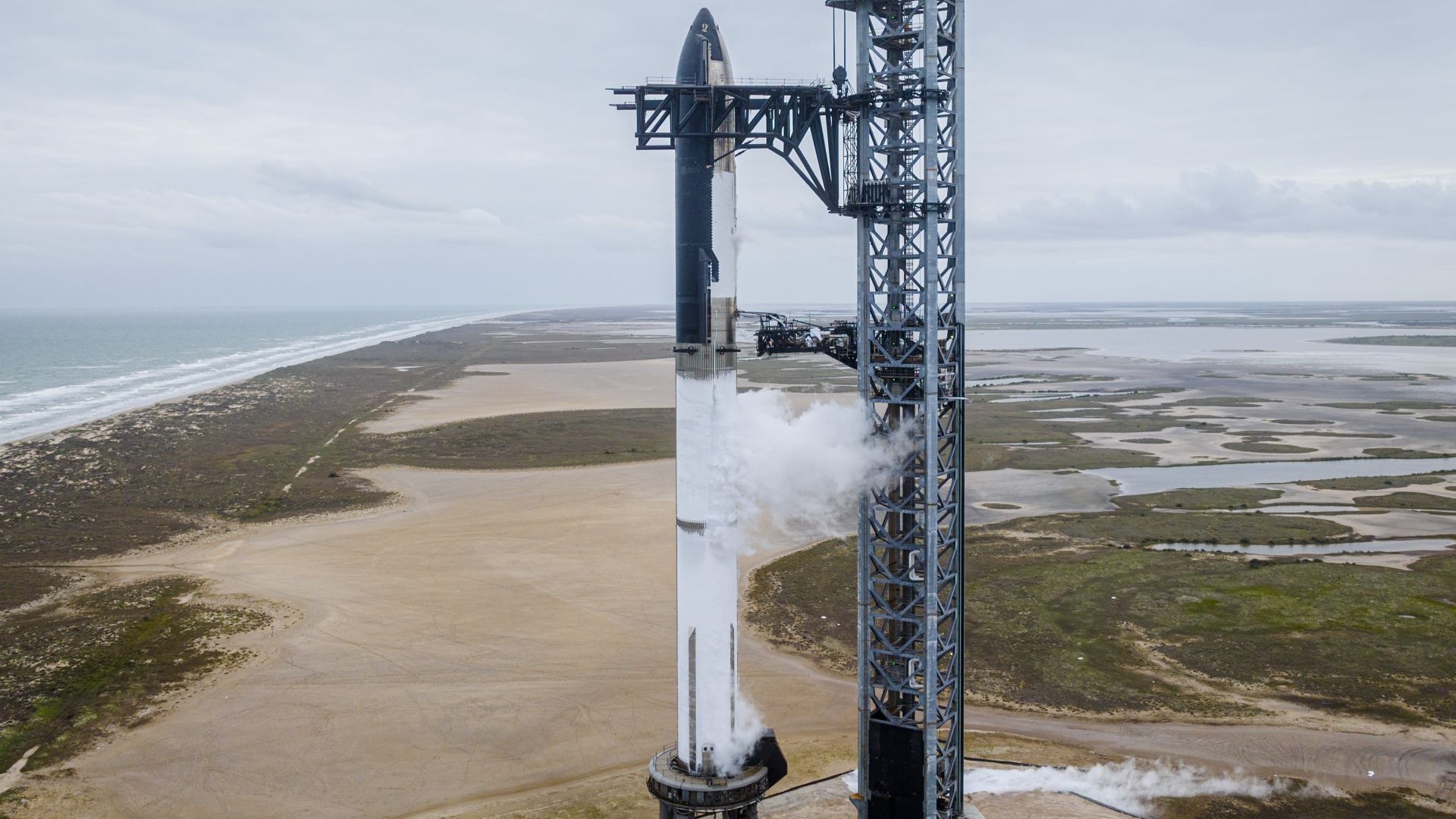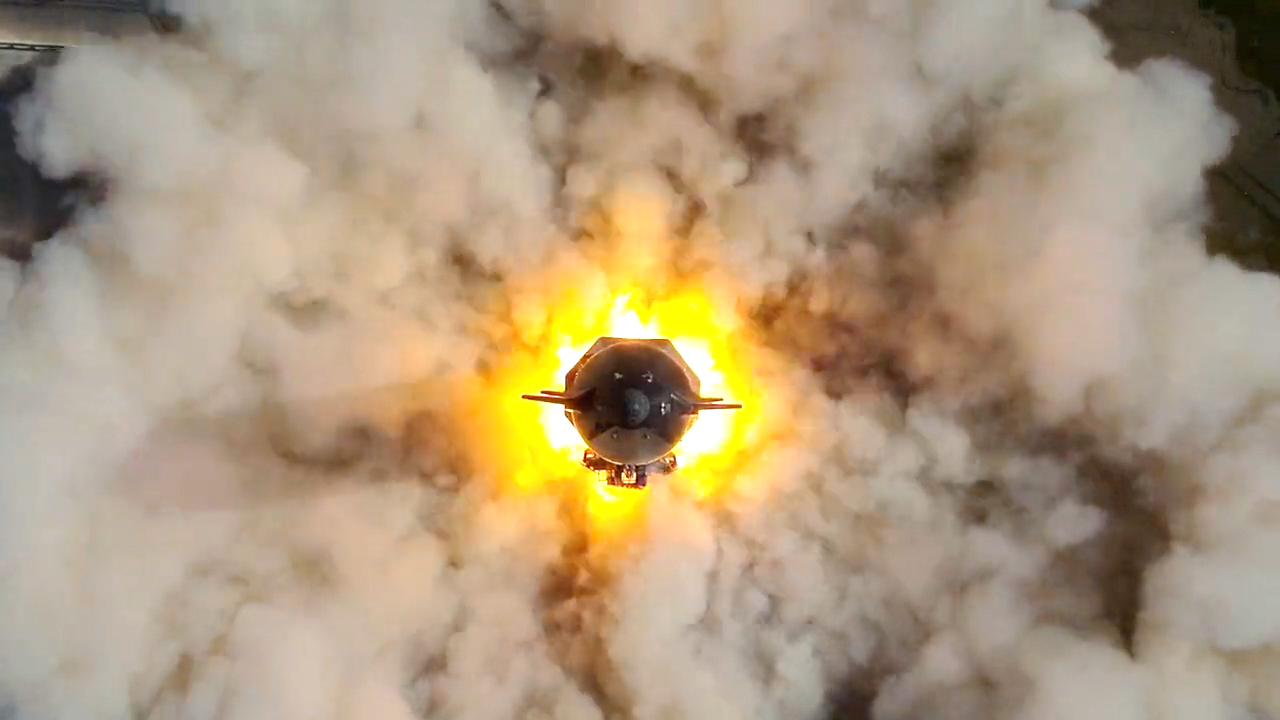
The first-ever orbital mission of SpaceX's huge new Starship vehicle will basically be a coin flip, according to company founder and CEO Elon Musk.
Starship has a roughly 50% chance of succeeding on its debut orbital test flight, which SpaceX aims to launch from its South Texas site in the next month or so, Musk said last week.
"I'm not saying it will get to orbit, but I am guaranteeing excitement," Musk said on March 7, during an interview at the Morgan Stanley Conference. "So, won't be boring!"
Related: SpaceX's 1st orbital Starship looks supercool in these fueling test photos
SpaceX is developing Starship to get people and cargo to the moon and Mars, and perform a variety of other spaceflight tasks. The giant, stainless-steel vehicle will be the most powerful rocket ever to fly, featuring about 2.5 times more thrust at liftoff than NASA's iconic Saturn V, Musk said at the conference.
And Starship is designed to be fully and rapidly reusable, which Musk views as the key breakthrough needed to make Mars colonization and other ambitious exploration feats feasible.
SpaceX is building multiple Starship vehicles at the South Texas site, which the company calls Starbase, and plans to launch them in relatively quick succession over the coming months.
Get the Space.com Newsletter
Breaking space news, the latest updates on rocket launches, skywatching events and more!
"So I think we've got, hopefully, about an 80% chance of reaching orbit this year," Musk said in the March 7 interview. "It'll probably take us a couple more years to achieve full and rapid reusability."

It's not surprising that Musk would seek to dampen expectations ahead of Starship's highly anticipated orbital debut. Rockets often fail on their first flight, as we saw earlier this month with Japan's new H3 launcher and in January with ABL Space System's RS1.
And we've heard similar words from Musk before: He prepared us all for SpaceX's Falcon Heavy to crash and burn on its first-ever liftoff attempt.
"I hope it makes it far enough away from the pad that it does not cause pad damage. I would consider even that a win, to be honest," Musk said of the Heavy back in July 2017.
Falcon Heavy soared high above those low expectations, successfully deploying Musk's red Tesla Roadster, and its spacesuit-clad mannequin driver "Starman," into orbit around the sun in February 2018.
But Falcon Heavy is basically a variant of SpaceX's workhorse Falcon 9; it straps three Falcon 9 first stages together, with a payload-carrying upper stage sitting atop the central booster. Starship is a more complicated, and novel, vehicle; it employs 33 of SpaceX's next-gen Raptor engines in its Super Heavy first stage and six Raptors in its upper stage, for example. (Falcon 9 and Falcon Heavy both use SpaceX's venerable Merlin engine.)
You'll want to tune in to the coming Starship orbital flight, whenever it happens and however it ends up going. As Musk said, it won't be boring.
Mike Wall is the author of "Out There" (Grand Central Publishing, 2018; illustrated by Karl Tate), a book about the search for alien life. Follow him on Twitter @michaeldwall. Follow us on Twitter @Spacedotcom or Facebook.
Join our Space Forums to keep talking space on the latest missions, night sky and more! And if you have a news tip, correction or comment, let us know at: community@space.com.

Michael Wall is a Senior Space Writer with Space.com and joined the team in 2010. He primarily covers exoplanets, spaceflight and military space, but has been known to dabble in the space art beat. His book about the search for alien life, "Out There," was published on Nov. 13, 2018. Before becoming a science writer, Michael worked as a herpetologist and wildlife biologist. He has a Ph.D. in evolutionary biology from the University of Sydney, Australia, a bachelor's degree from the University of Arizona, and a graduate certificate in science writing from the University of California, Santa Cruz. To find out what his latest project is, you can follow Michael on Twitter.









